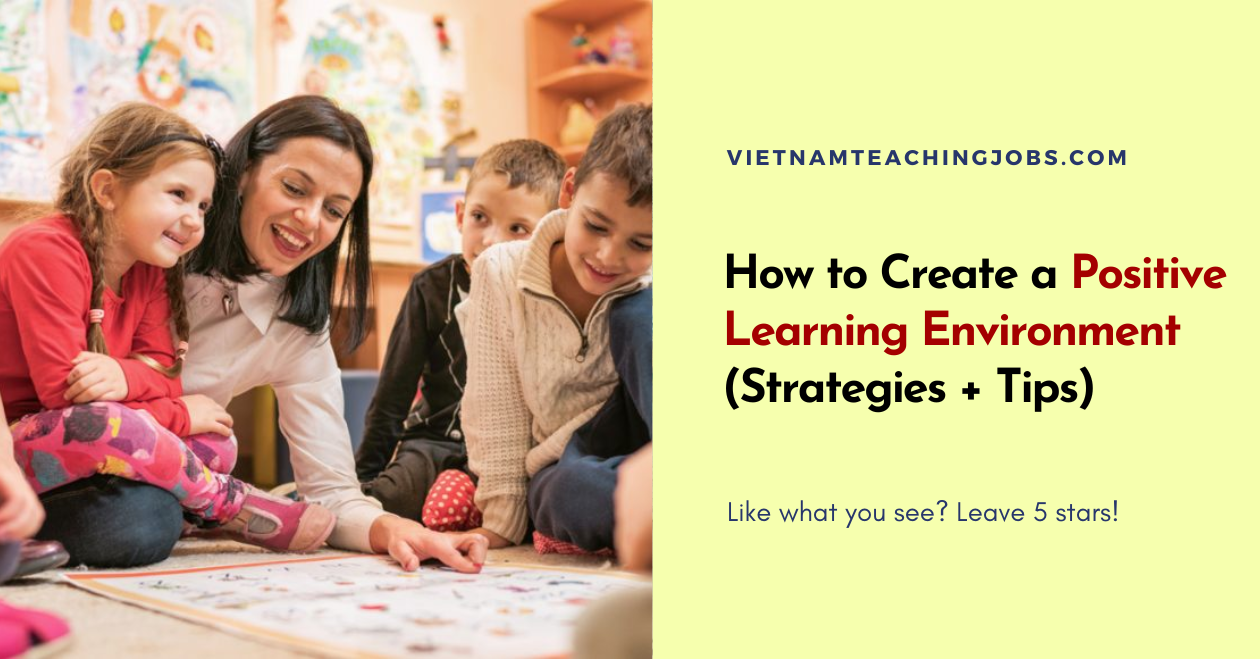In the realm of education, the pursuit of academic rigor has become a fundamental aspect of fostering meaningful learning experiences. In this article, VTJ will discuss the concept of academic rigor, shedding light on its importance, benefits, and practical implementation in educational settings.
>>>Read more: 20+ Effective Classroom Management Strategies and Techniques
>>>Read more: Practical Tips to Deal with Negative Teacher
What Is Academic Rigor And Why Is It So Important?

What is academic rigor? Academic rigor refers to the level of challenge & complexity in educational experiences
Academic rigor refers to the level of challenge, complexity, and depth in educational experiences. It goes beyond surface-level learning and encourages students to engage in critical thinking, problem-solving, and analytical reasoning. Academic rigor is important because it equips them with the necessary skills and competencies to navigate complex problems, think independently, and adapt to changing circumstances. Rigorous academic experiences foster intellectual curiosity, promote a growth mindset, and cultivate a deep understanding of the subject matter.
>>>Read more: 15+ Ways to build confidence in your ESL students
What Does Academic Rigor Look Like?

What Does Academic Rigor Look Like?
Academic rigor can manifest in various ways. It involves designing curriculum and instructional practices that push students to think deeply, analyze information critically, and apply knowledge in real-world contexts. Rigorous assignments and assessments require students to demonstrate higher-order thinking skills, such as synthesizing information, evaluating arguments, and solving complex problems. Rigor also involves creating an environment that encourages intellectual discourse, collaboration, and the pursuit of excellence. It challenges students to go beyond memorization and actively engage with the material, fostering a love for learning and a thirst for knowledge.
>>>Read more: What is blended learning? Types, Examples & Benefits?
Why Is Academic Rigor So Hard To Achieve In Lessons?

Why Is Academic Rigor So Hard To Achieve In Lessons?
Achieving academic rigor in lessons can be challenging for several reasons. Firstly, it requires careful planning and thoughtful curriculum design. Teachers need to identify appropriate learning objectives, select challenging content, and create opportunities for students to apply their knowledge. Secondly, implementing rigorous instructional strategies demands a shift from traditional teaching methods towards more student-centered approaches. This transition can be daunting and requires ongoing professional development and support. Additionally, time constraints and external pressures, such as standardized testing, can sometimes hinder the integration of rigorous practices. Overcoming these challenges requires a commitment to continuous improvement, collaboration among educators, and a focus on creating a supportive learning environment that values academic rigor.
>>>Read more: 22+ SMART Teacher Goals Examples in 2023
What Is A Academic Rigorous Task?

What Is A Academic Rigorous Task?
A rigorous task is an assignment or activity that challenges students to think critically, apply knowledge, and engage in complex problem-solving. It goes beyond simple recall or regurgitation of information and requires students to analyze, evaluate, and synthesize information to arrive at meaningful conclusions. Rigorous tasks often involve real-world scenarios, open-ended questions, and multiple perspectives, encouraging students to think deeply and develop a deeper understanding of the subject matter.
>>>Read more: How to Teach Critical Thinking Skills to Students
Process For Planning An Academically Rigorous Task
- Planning an academically rigorous task involves several key steps:
- Identify learning objectives: Clearly define the specific knowledge, skills, and competencies that students should acquire through the task.
- Select challenging content: Choose content that is intellectually stimulating and aligns with the learning objectives. Consider incorporating interdisciplinary connections and real-world applications.
- Design the task: Create a task that requires higher-order thinking skills, such as analysis, synthesis, and evaluation. Ensure that the task is appropriately challenging for the students’ level of understanding.
- Provide clear instructions: Clearly communicate the expectations, guidelines, and criteria for success. Students should understand the purpose of the task and how it aligns with their learning goals.
- Offer support and resources: Provide students with the necessary resources, materials, and guidance to complete the task successfully. Consider scaffolding the task to support students’ progress and growth.
- Assess and provide feedback: Develop a rubric or criteria to assess student performance. Provide timely and constructive feedback to help students understand their strengths and areas for improvement.
>>>Read more: Guide on How to Teach Vocabulary Effectively for Teachers
Featured Job
How Do Resources Support Productive Struggle?

Resources play a crucial role in supporting productive struggle in academic rigor
Resources play a crucial role in supporting productive struggle in academic rigor. They provide students with the tools, information, and guidance necessary to navigate challenging tasks effectively. Resources can include textbooks, articles, online materials, multimedia, and expert guidance. When appropriately selected and utilized, resources can:
- Provide background knowledge: Resources offer students access to foundational information and concepts necessary to understand and engage with rigorous tasks.
- Offer different perspectives: Resources can present diverse viewpoints, encouraging students to consider multiple perspectives and think critically about complex issues.
- Facilitate independent learning: Resources empower students to take ownership of their learning by providing opportunities for self-directed exploration and research.
- Support problem-solving: Resources can offer examples, case studies, and models that guide students in developing problem-solving strategies and approaches.
>>>Read more: How To Write a Curriculum in 8 Steps: A Complete Guide
How Does A Teacher Get Students Engaged In Academic Rigor?

How Does A Teacher Get Students Engaged In Academic Rigor?
Engaging students in academic rigor is a crucial task for any teacher. To achieve this, a teacher must employ various strategies that foster curiosity, critical thinking, and active participation. Firstly, establishing a safe space where students feel comfortable expressing their thoughts and ideas, teachers can encourage open discussions and promote a sense of belonging. Secondly, incorporating interactive and hands-on activities can significantly enhance student engagement. By using real-world examples, simulations, or group projects, teachers can make the learning experience more relatable and practical, capturing students’ attention and motivating them to delve deeper into the subject matter. Setting high expectations and offering opportunities for independent research, problem-solving, and creative thinking, teachers can inspire students to push their boundaries and strive for academic excellence. Lastly, integrating educational apps, videos, or online platforms can make learning more interactive and dynamic, catering to different learning styles and capturing students’ interest.
>>>Read more: 4 Types of Learning Styles: How to Use VARK Model in Teaching
How Should A Teacher Who Supports Productive Struggle Handle A Mistake In Class?
When supporting productive struggle, it is essential for teachers to handle mistakes in a constructive and supportive manner. Here are some approaches to consider:
- Normalize mistakes: Emphasize that mistakes are a natural part of the learning process and an opportunity for growth. Create a classroom culture that encourages risk-taking and views mistakes as learning opportunities.
- Provide a safe environment: Foster a supportive and non-judgmental classroom environment where students feel comfortable sharing their mistakes. Encourage open dialogue and create opportunities for students to learn from one another’s errors.
- Offer guidance and feedback: Provide timely and specific feedback that helps students understand their mistakes and offers suggestions for improvement. Focus on the process rather than solely on the outcome, highlighting areas for growth and strategies for overcoming
>>>Read more: How To Write a Lesson Plan in 6 Steps: The Complete Guide
3 Myths About Academic Rigor
Myth 1: Academic rigor means overwhelming students with excessive workload.
Reality: Academic rigor is not about piling on an excessive amount of work. It is about challenging students intellectually and promoting deep learning. Rigorous academic experiences focus on critical thinking, problem-solving, and analytical skills rather than simply increasing the quantity of assignments. Quality over quantity is the key to achieving academic rigor.
Myth 2: Academic rigor is only for high-achieving students.
Reality: Academic rigor should be accessible to all students, regardless of their abilities or backgrounds. It is not limited to a select group of high-achievers. Every student can benefit from rigorous academic experiences that push them to think critically, explore new ideas, and develop a deeper understanding of the subject matter. Differentiation and scaffolding techniques can be used to ensure that all students are appropriately challenged.
Myth 3: Academic rigor stifles creativity and limits student autonomy.
Reality: Academic rigor and creativity are not mutually exclusive. In fact, rigorous academic experiences can foster creativity by encouraging students to think outside the box, explore different perspectives, and find innovative solutions to problems. Rigor does not mean rigid adherence to a set curriculum; it involves providing students with opportunities to explore their interests, engage in independent research, and express their ideas in unique and creative ways. Academic rigor should empower students to become active participants in their learning journey, rather than stifling their autonomy.
>>>Read more: 13 Types of Students in the Classroom and How to Deal with Them
By understanding the essence of academic rigor, educators can design rigorous learning environments that inspire students to think critically, solve problems creatively, and engage in rigorous intellectual pursuits. Additionally, students can gain insights into how academic rigor can enhance their learning journey, equipping them with the necessary skills and competencies to thrive in an increasingly complex and competitive world.
👉👉👉 Click HERE to request free consultation




